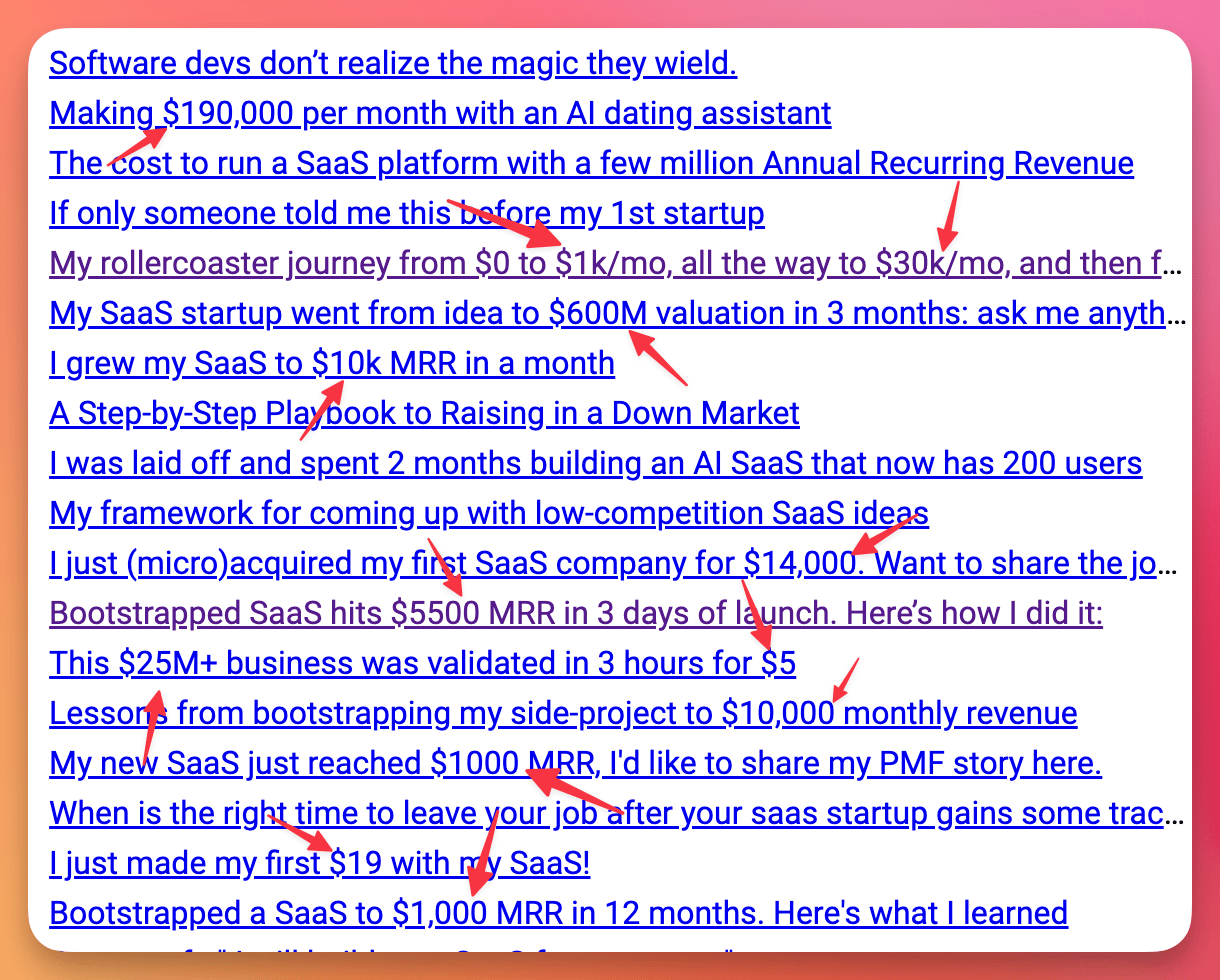🚀 Is audience building useless?
Where to focus.
Reading time: < 5 minutes
Happy Sunday, sunshine!
A 7-mile run, half of Permission Marketing read, and a meditation session are done - the day is off to a good start.
Let’s talk about when audience building does and doesn’t make sense, shall we?
It's easy to see people on social media with big audiences crushing it with their businesses and think "They have so many customers because of their huge audience - if only I had an audience like that, I could do the same."
This is a dangerous viewpoint without considering how they got to where they are.
While it can look like the big audience came before the success, that isn’t often true, particularly in software businesses.
Thinking that building an audience first will solve our present or future problems of not having paying customers can lead us to prioritize our efforts in ways that may not be in our best interests.
While building an audience before moving into products can work, this approach lends itself better to info products.
This is the approach that Justin Welsh, Sahil Bloom, and Ben Meer, have all taken, and it's worked out well for them. This works because they consistently put out great, focused content for free.
Then, over time they create trust from their readers and confidence from their audience. As their audience grows, they can get loads of data points on what they struggle with and want more of, and they could then create paid solutions to those problems.
If we then look at SaaS/software creators who have big audiences, the situation is reversed. That is, their audiences grew most significantly after their successes. Pieter Levels, Danny Postma, and most recently Marc Lou's audiences are what they are not because of their content, but because of their inspiring success stories.
Take a look at the top posts of all time in the r/SaaS subreddit, and there’s no question people like to see dollar signs are hard numbers:

Yet I'm hard-pressed to think of people whose software business success was dependent on a pre-existing audience that wasn't in turn built on a previous success story.
Jason Cohen tells first-hand of the limited effects that having a sizable audience had on the growth of WP Engine in terms of customer acquisition, where out of his 18,000-person mailing list, he got a measly 2 signups upon launching. Not exactly the rocket launch you might expect from an audience of that size.
With this understanding, given a clean slate with no audience or customer base, most of us are going to be better off spending our time building up a customer base first.
The beauty of this is:
As you get customers, you also get revenue
Customers are themselves an audience that you can build upon and upsell
Once you see a certain amount of growth, you now have a story that will inspire, that you can then more easily build a personal brand audience from if you desire
You don't risk building an audience in a niche you end up not wanting to build a product for
Don't get me wrong, building an audience has tremendous benefits - namely in the relationships built in the process (more on that later).
But it’s worth careful consideration before investing too much of our time on it if we're depending on it to spark the growth of our SaaS or software business.
-Mac
P.S. Friends keep friends up-to-date, so reply and let me know the latest with what you’re working on? 😀
When you’re ready:
1:1 Coaching via chat: Get coaching and cheerleading from me privately in Discord. The price goes up by $50 for every 5 people that subscribe.
1:1 Clarity call: Wherever you are on your bootstrapping journey, chances are I've been there. I know the struggles and challenges and am here to help through a 1:1 clarity call.
Tools and resources: A complete list of the tools and resources I use to run my business, and some books that have helped me along the way.

